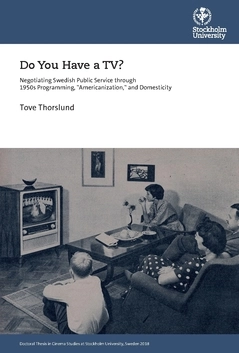

Do you have a TV? negotiating Swedish public service through 1950's programming, "americanization," and domesticity
- Utgiven: 2018
- ISBN: 9789177973188
- Sidor: 317 st
- Förlag: Stockholm University
- Format: Häftad
- Språk: Engelska
Om boken
Åtkomstkoder och digitalt tilläggsmaterial garanteras inte med begagnade böcker
Mer om Do you have a TV? negotiating Swedish public service through 1950's programming, "americanization," and domesticity (2018)
I oktober 2018 släpptes boken Do you have a TV? negotiating Swedish public service through 1950's programming, "americanization," and domesticity skriven av Tove Thorslund. Den är skriven på engelska och består av 317 sidor djupgående information om media och kommunikation. Förlaget bakom boken är Stockholm University.
Köp boken Do you have a TV? negotiating Swedish public service through 1950's programming, "americanization," and domesticity på Studentapan och spara pengar.
Tillhör kategorierna
Referera till Do you have a TV? negotiating Swedish public service through 1950's programming, "americanization," and domesticity
Harvard
Oxford
APA
Vancouver



















